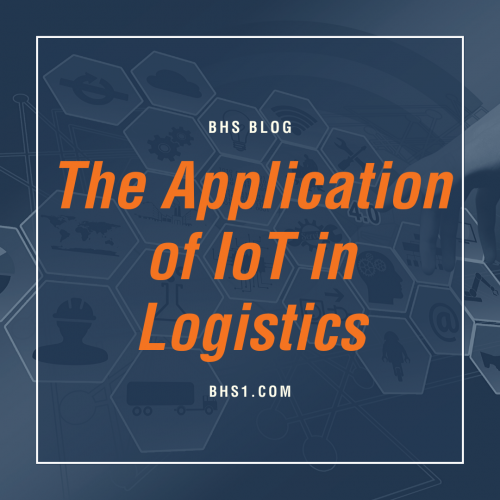We use cookies to make your experience better. To comply with the new e-Privacy directive, we need to ask for your consent to set the cookies. Learn more.
The Application of IoT in Logistics

But what exactly does that look like today? And how exactly does the Internet of Things help logistics operators? Here are a few distinct trends in IIoT applications in the logistics industry:
- 1. IIoT improves equipment uptime with predictive maintenance and condition monitoring.
Sticking to maintenance schedules requires planned downtime for some of your most mission-critical assets, whether that’s your forklift fleet or the battery handling equipment that keeps trucks moving.
Built-in sensors can monitor the health of equipment systems in real-time, setting the stage for targeted, just-in-time maintenance programs. Condition-based monitoring alerts operators when, say, oil overheats or collects contaminants.
Combined with data analytics, sensor data allows predictive maintenance, which uses complex algorithms to warn users of potential failure points well before they go critical. Both of these IIoT strategies reduce equipment downtime and ensure that assets are ready for the job when they need to be.
- 2. Smart sensors enhance food safety in the cold chain.
Thermometers on parcels or even pallets of food can track temperature readings and provide a detailed readout at every step along the cold chain. Predictive algorithms can even alert managers if a parcel’s temperature begins to rise, giving them time to react before the product is exposed to unsafe conditions.
While this improves the safety of our food supply chains on its own, it also provides peace of mind for logistics customers. Monitoring food package conditions — by temperature, certainly, but also potentially by humidity and climate purity — can even help comply with FDA Hazard Analysis Critical Control Point (HACCP) requirements.
- 3. Warehouse automation depends on IIoT connections.
According to industry publication Material Handling & Logistics, more than 4 million automated guided vehicles (AGVs) and autonomous mobile robots (AMRs) will be handling materials across 50,000 warehouses by 2025.
These automated robots will pick orders, deliver them to human order packers, and repeat the task virtually nonstop, a strategy known as “AGV and/or AMR Goods-to-Person” fulfillment. Make no mistake: Robots need the industrial IoT.
Centralized, cloud-based computing systems organize tasks and assign them to units. The AGVs and AMRs report back to human employees and the warehouse computer system, alerting packers to incoming orders and tracking inventory along the way. Edge computing systems in these AGVs and AMRs also protect workers, halting them in place when they detect people or obstacles in their path.
So far, we’ve only discussed the use of IIoT in warehouses and distribution centers. This technology is also poised to remake the trucking and shipping industries, providing centralized tracking for customers and logistics providers at every point in the supply chain.
These broader, system-wide solutions aren’t quite here as we write these words — but they will be soon. And the companies that are first to understand the application of IoT in logistics today will be most ready for them as they arrive, with corresponding improvements in efficiency and customer service for shipping firms and warehouse operators alike.
